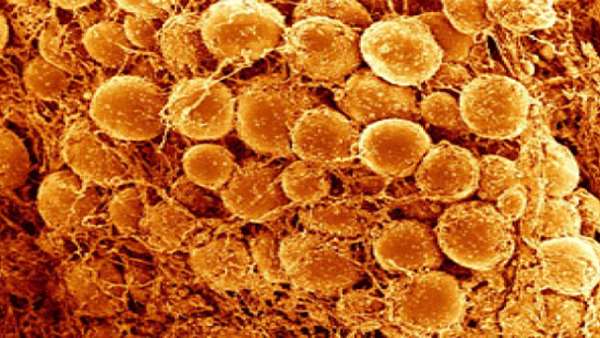Harnessing ‘rogue’ stem cells to grow healthy fat could help treat metabolic disorders
One theory of obesity suggests that when the body loses the ability to make healthy brown fat, unhealthy white fat cells expand and build up around the body, leading to heart disease and other adverse effects of being overweight.
One theory of obesity suggests that when the body loses the ability to make healthy brown fat, unhealthy white fat cells expand and build up around the body, leading to heart disease and other adverse effects of being overweight. Scientists at American University have discovered a potential method for reining in this harmful process—and it revolves around controlling the process by which stem cells differentiate into fat cells.
A team at American University discovered that when they grew stem cells in the lab, ensuring they had the proper “instructions” to become fat cells, some turned into fat cells but others did not. Those “rogue” cells didn’t replicate or differentiate, though they exhibited gene expression patterns that were similar to stem cells that turned into fat.
Eventually these dormant cells became active, turning into healthy fat, bone or cartilage, according to an article released by the school and published in Science Daily.
The American University researchers propose that the body keeps a reservoir of these dormant stem cells in fat tissue. And they believe they’ve identified a gene that plays a role in determining whether the cells differentiate into healthy fat or something else.
"This reservoir is critical. If you run out of these rogue cells, or you"re unable to make new fat cells, fat could get deposited in areas of the body where it"s unhealthy," explained John Bracht, assistant professor of biology at American University, in the article.
It’s a new wrinkle in the ongoing search for new ways to treat obesity by controlling the balance of healthy and unhealthy fat. Last year, Yale scientists discovered they could use a depression drug to inhibit a type of immune cell in belly fat that creates inflammation and hampers fat metabolism. Scientists at Sanford Burnham Prebys Medical Discovery Institute discovered that when they increase signaling among certain peptides, they can prevent obesity and increase the activity of healthy brown fat in mice. And Harvard researchers found an enzyme that they believe protects cells from the harmful effects of unhealthy fat.
More recently, another American University team worked with scientists at the University of Michigan to unravel a signaling pathway that prompts white fat cells to take on all the good properties of brown fat, becoming what obesity researchers call “beige” fat. They were surprised to discover that nicotine can contribute to this process, which may explain why many smokers claim the habit helps them stay trim.
The American University researchers who are investigating stem cells believe that directing rogue cells—in essence coaxing them through the differentiation process—could ensure that the body maintains a high level of healthy fat. Their next step is to study the dormant cells and the influential gene they identified in mouse models.
"We want to figure out how do these cells decide whether they"re going to accumulate fat or not,” Bracht said.
Reference:https://www.sciencedaily.com/releases/2018/06/180611133426.htm





ارسال به دوستان